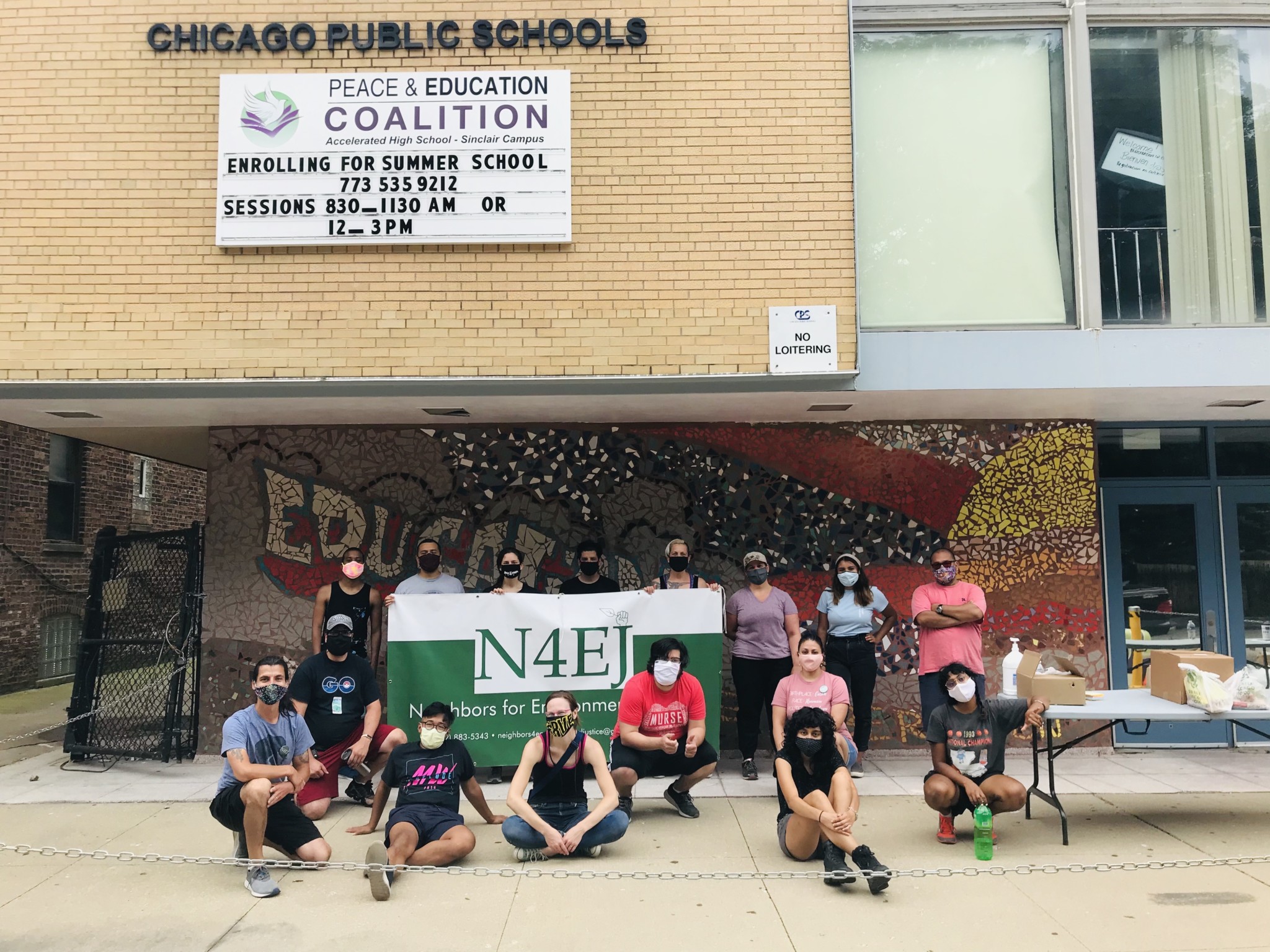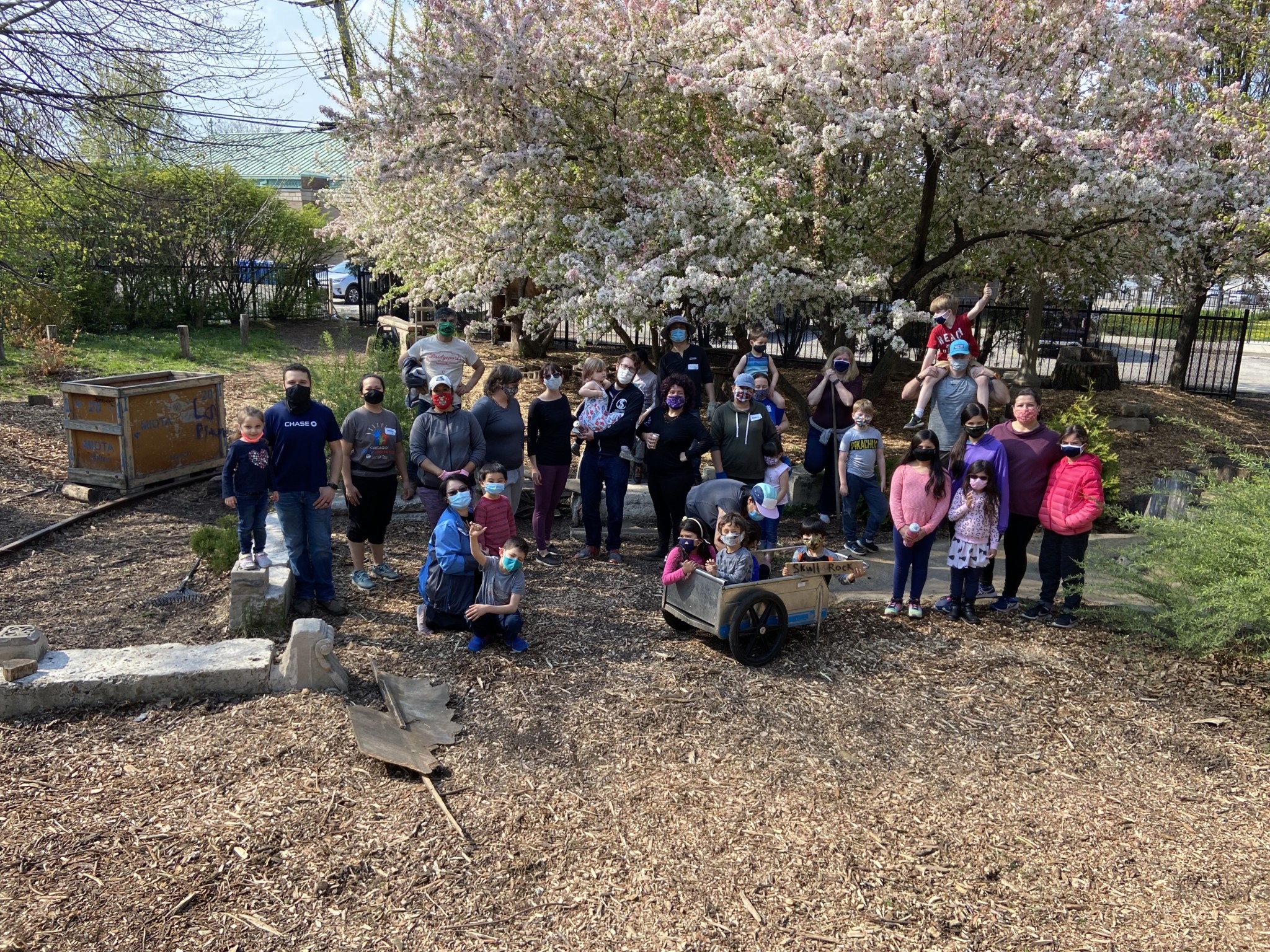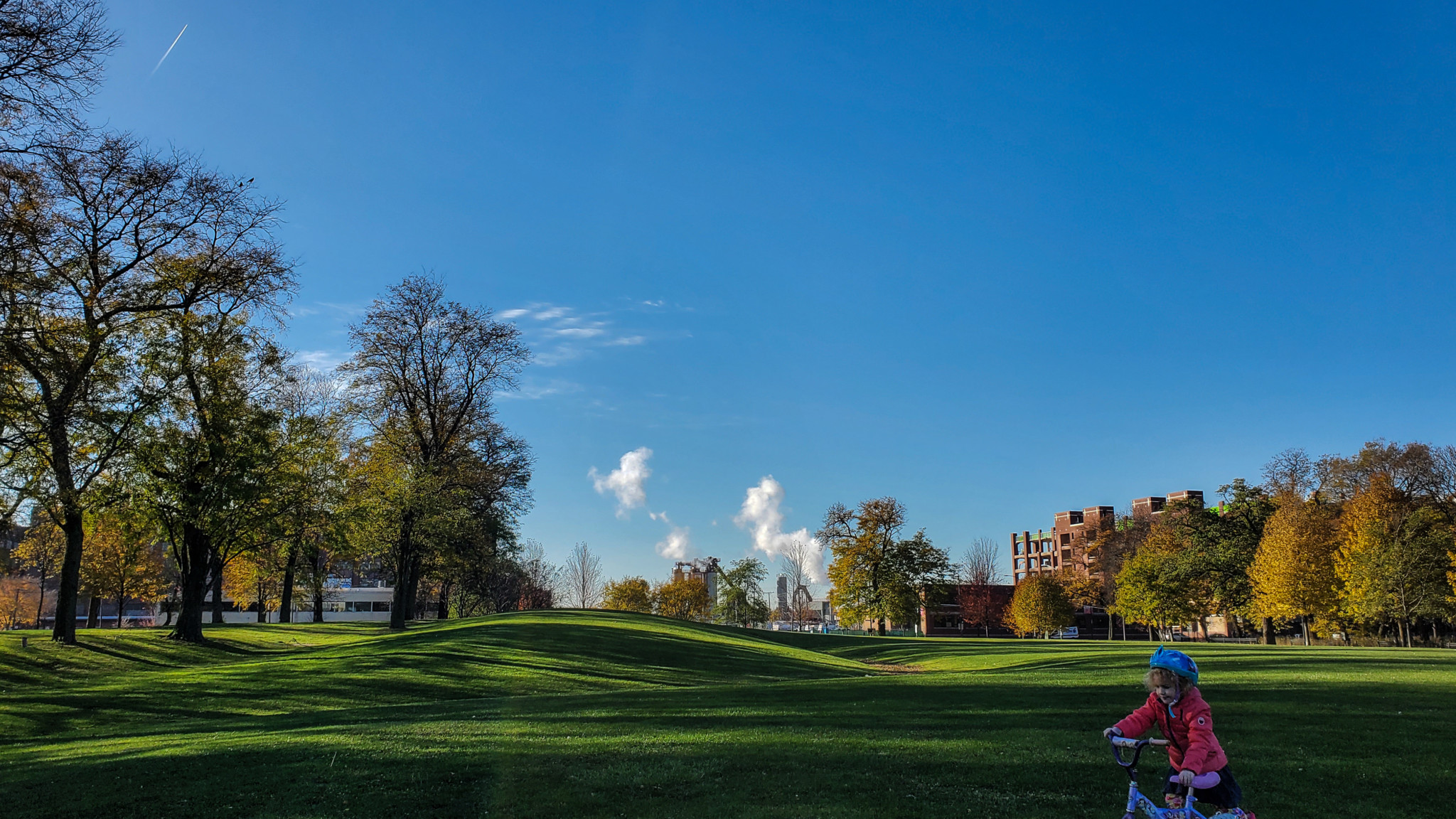McKinley Park is a predominantly Latinx working-class neighborhood on Chicago’s Southwest Side, located between Pilsen, Bridgeport, Back of the Yards, and Brighton Park. The neighborhood is only a fifteen-minute drive away from the Loop and walking distance to the Mexican corner store, La Placita on 35th. McKinley Park gives off a family-friendly vibe as it is common to see runners, parents pushing strollers, cyclists, and people walking their dogs. Tall trees cool in the summer, and their leaves provide a thick blanket of oranges and reds on sidewalks in the fall.
The neighborhood’s namesake public park, which covers 71.75 acres, has a skating rink, swimming pool, new tennis courts, and soccer fields. The Chicago Park District offers recreational activities throughout the year for children, teens, and adults. Visitors to the park will also find an eight-acre lagoon filled with native wetlands and prairie grass, inhabited by various bird species and other wildlife.
According to the Encyclopedia of Chicago, Irish workers first came to live in the area in the 1830s. The community grew as railroads were built, and the area later became home to steelworkers and stockyard workers from other ethnic minorities.
But today, this juxtaposition—manufacturing and distribution surrounding a residential area—is concerning to many residents. Despite the schools, daycare centers, homes, and family-friendly amenities, significant portions of McKinley Park are designated for manufacturing and industry. As time has passed, land use and zoning designations haven’t been updated to reflect an evolving neighborhood.
This section will highlight some of the neighborhood’s family-friendly spaces, as well as some of the challenges residents face. (Alma Campos)
Neighborhood captain Alma Campos is the immigration editor at the Weekly.
Best Local Activism
Neighbors for Environmental Justice

It was with the sudden appearance of a hot mix asphalt plant across the street from McKinley Park that Neighbors For Environmental Justice (NFEJ) was born.
Alfredo Romo, the organization’s executive director, said it was during the winter of 2018 when he first found out about it. The sight of smoke pouring out of the plant columns is hard to miss if you’re walking down Pershing Ave. or walking around the park. According to the organization, the plant has been cited more than half a dozen times in 2020, for air pollution, failure to control windborne material, and operating equipment without a permit. Some community residents also say the neighborhood’s alderman, George Cardenas, did not inform the community about the asphalt plant coming.
“We just felt like those were very irresponsible processes that allowed this company to come in such close proximity to our park, schools, and residential homes,” Romo said. That is why Romo and members started to organize and began to understand the procedure around permitting and zoning within the city and state.
The group’s organizing efforts have led to state senators pushing Michael S. Regan, the administrator of the Environmental Protection Agency, to provide oversight of the asphalt plant, pointing to more than 100 odor complaints from residents in the past three years alone.
Though things are not moving as fast as Romo and others would like, as long as the asphalt plant is still operating, the group is not stopping. “You look at what’s in front of you, and either you accept that sort of treatment—the city or the state coming in with a seal of approval, essentially authorizing a permit to pollute your environment to degrade your environment—or you push back, and I’m willing to push back.”
NFEJ is also part of the Chicago Environmental Justice Network, which connects their organizing to citywide issues including the Hilco warehouse in Little Village and General Iron plant in the Southeast Side. The group continues the fight to close the asphalt plant. “The air pollution health and economic stressors data within these marginalized communities are primary examples that zoning ordinances and state environmental policies are clearly not working for us,” said Romo.
So if you’re in the area while it smells bad, you can head on over to the Google form smellsbad.today to submit a report or file a complaint with the Chicago Department of Public Health and the Illinois Environmental Protection Agency. (Alma Campos)
You can learn more about Neighbors For Environmental Justice at: bit.ly/2X97dWb.
Best Place to Cool off in the Summer
McKinley Park Pool
McKinley Park Pool is a twenty-five-meter outdoor swimming pool located on the southwest corner of the neighborhood’s namesake park. Bordered by the field house, Pershing Road, the parking lot, and a dog park, this pool area has two swimming pools. The main pool is between three feet and nine feet deep and six lanes across, so even when the pool is busy, there is plenty of space to swim. The pool area also includes an eighteen-inch, zero-depth entry kid pool with water sprinklers, a climbing structure, and a water slide.
Both pools are run by the Chicago Park District and are free to everyone. Be sure to check the calendar online or by calling the park before you go—the pool is open late June through Labor Day, but the schedule is slightly different every summer. You must be wearing a bathing suit upon entry or you will not be allowed in. On hot days, be sure to arrive early for family swim and open swim, as the pool often reaches its maximum capacity quickly. This is a fantastic place for people of all ages to cool off and relax, or get some exercise. People are friendly, and you will probably even see someone you know.
This pool has meant a lot to my family and me throughout the years. As a native Texan and a teacher, summer is my time to shine. We have this great pool that we can walk to, and it’s free. When my daughter was born, I was excited to finally have a reason to go in the kid pool. When I found out I was expecting a son, I contacted the Park District about the gender-segregated swim times and got that changed so now we can all go together. It is absolutely my favorite place in Chicago. It’s also refreshing to see the city put resources into the southwest side for the enjoyment of all who live here. (Kate Moser)
While the pool is only open during the summer, McKinley Park is open all seasons. You can see a list of activities such as ice-skating, nature walks and more here: bit.ly/38QkyVt.
Best Play Area
McKinley Park Community Play Garden

You hear the shrieks of young children’s laughter before you can see anything. The wooded area looks almost out of place between the alley, the library, and the homes along Wolcott Avenue. As you walk through the wooden gate made of twigs and branches, your eyes adjust to the shady space and you see nature. It’s magical. The McKinley Community Play Garden opened in June 2018, and has quickly become a center of community life for the residents of McKinley Park and surrounding neighborhoods. “I think the space is an awesome resource. It’s unique because it’s kid-centric, and is a great way to connect with neighbors,” said resident and garden committee member Sara West.
The park, or “Library Park” as residents used to call it, was acquired by the organization NeighborSpace in 2002 and was maintained until 2016 by a neighbor. Folks on the block remember that it was just one man who helped maintain the space, but once he could no longer physically do the work, Library Park fell into disrepair, with weeds growing out of control. NeighborSpace reached out to local resident Katie Flores, who mobilized a group of neighbors and other local stakeholders to work with a design firm and envision a space to connect young children and their families to nature.
Although the space was originally designed for young children, on any given day you can see adults taking their lunch break or teenagers hanging out with friends alongside groups of toddlers and preschoolers from the local schools: Namaste Charter School, Velma Thomas Early Childhood Center, and Little Tykes Daycare.
I am deeply committed to bringing nature play opportunities to children of color in urban environments. During the 2016-17 school year, I engaged in a year-long action research project looking at the impact of nature play on young children. I found that children playing in nature play spaces used more language and more advanced language compared to those who played in the classroom or in a traditional playground. The results were startling, and solidified my commitment to nature play. I currently work at CPS Velma Thomas Early Childhood Center and bring my students to the nature play garden at least two times a week.
The space is currently cared for by a group of sixteen residents from McKinley Park as well as from Bridgeport and Pilsen. This past spring and summer, the volunteer committee was busy organizing clean-up days, a Summer Solstice Family event, and a Community Market. The space is also used for Community Yoga every Saturday morning. This group of dedicated and passionate neighbors plans to host a movie night, a Halloween Harvest celebration and an adult beer tasting event in the future. You can follow the Play Garden on Facebook for event information.
The space is also available to rent for events for individuals, nonprofits and businesses. 100 percent of the proceeds from rentals go to maintaining the garden and bringing more free events to the community. (Jessica Fong)
McKinley Park Community Play Garden, 3518 S Wolcott Ave. bit.ly/renttheplaygarden.

